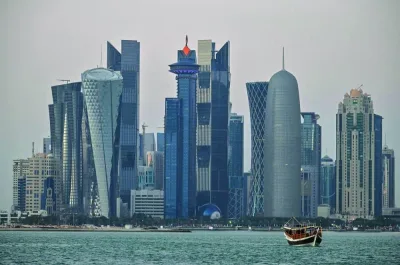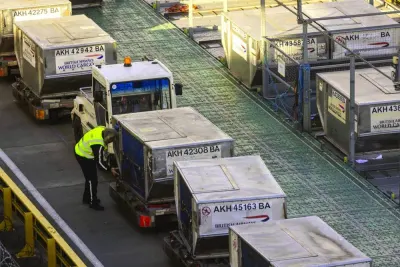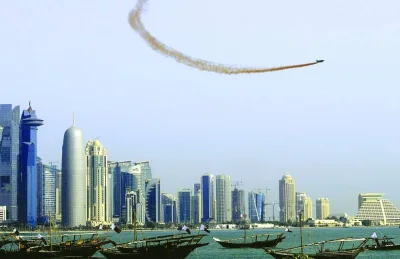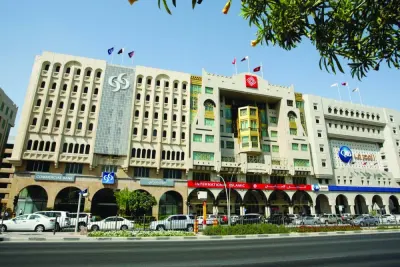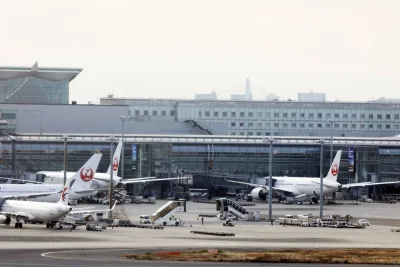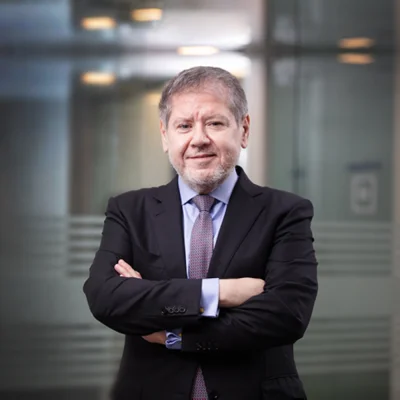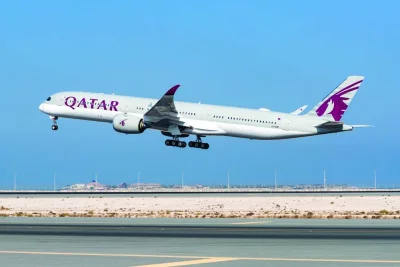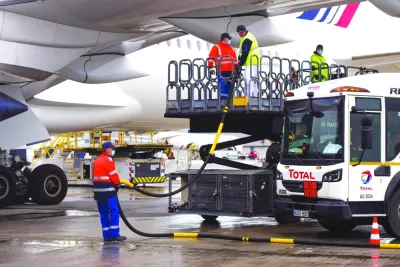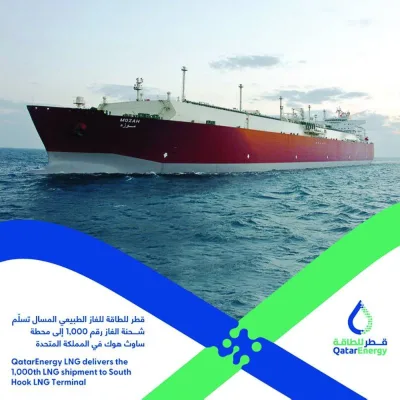After registering solid growth in 2023, Qatar Airways is looking to expand further next year with new destinations and resumption flights, which will take the national carrier’s route network in excess of 170 destinations around the world.In 2024, Qatar Airways will add Venice, Italy in June, followed by Hamburg, Germany in July.These come on the back of recent expansion to the Qatar Airways winter schedule, which includes increased flight frequencies to key leisure destinations, including Amsterdam, Bangkok, Barcelona, Belgrade and Miami.Recently, Qatar Airways introduced an in-house application that enables its cabin crew to deliver personalised experiences to passengers. In the initial phase, the application offers real-time insights on flight information, and customer and service information.This allows cabin crew to view passengers’ profiles, including privilege club members and oneworld members, as well as all special service requests and preferences for a more personalised and integrated journey with the award-winning airline. The application also empowers them by providing access to up-to-date digital training materials.In the coming months, Qatar Airways will have reached the first milestone in this phase of digital transformation by providing cabin crew with more than 15,000 mobile devices. The airline will complete the roll-out of the new project in multiple stages, with plans to expand its scope to Hamad International Airport and overseas airports and lounges, integrating passengers’ unique itinerary and requirements across all touch-points.This month, the airline announced collaboration with renowned Qatari chef, Noof al-Marri, who will bring her exceptional talent and passion for Qatari cuisine to the airline's business class.Noof al-Marri joined the airline as the latest Qatari chef and will introduce a new era of Qatari culinary excellence in the sky.In November, Qatar Airways renewed its longstanding partnership with FIFA, extending through to 2030.The renewed collaboration will include the FIFA World Cup 2026, FIFA Women's World Cup 2027, and FIFA World Cup 2030, as well as youth tournaments starting with FIFA U-17 World Cup in IndonesiaThis month, Qatar Airways Group and the Asian Football Confederation (AFC) signed a global partnership set to transform the fan experience at Asian football competitions in the coming years.The partnership will run until 2029. The package of rights also includes other key competitions such as the AFC Asian Cup Saudi Arabia 2027, AFC Women’s Asian Cup 2026, AFC U23 Asian Cup Qatar 2024, AFC Futsal Asian Cup 2024, 2026 and 2028, as well as all AFC youth national team competitions during the period.Early this month, Qatar Airways Group Chief Executive Officer, Badr Mohamed al-Meer, who took over from HE Akbar al-Baker, following his retirement from the airline, announced a special package of benefits for Qatari retirees holding the official retirement card. This new offering is a tribute to the Qatari retirees for their dedication and service towards their country.From January 2024, all Qatari retirement card holders will be entitled to discounts on all Qatar Airways flights, with discounts of 25% for first and business class, and 50% for economy class tickets to over 170 destinations worldwide.This month the airline announced that al-Meer has been elected to the International Air Transport Association’s Board of Governors.The International Air Transport Association (IATA) is the trade association for the world’s airlines, representing some 320 airlines or 83% of total air traffic.Marking the start of environmental celebrations with EXPO 2023 Doha, Qatar Airways has introduced new menu items onboard sourced from local organic farms in Qatar. The airline’s latest delicious additions are available for passengers travelling from Doha until March 2024.In November, the airline announced its commitment as the Official Airline Partner of United for Wildlife (UfW), an initiative working to tackle the illegal wildlife trade and protect endangered species, founded by Prince William and The Royal Foundation of The Prince and Princess of Wales in 2014.That month, Qatar Airways commemorated its 10-year anniversary as a member of the oneworld alliance, alongside 12 of the world's leading airlines.During this journey, Qatar Airways has grown to become the alliance’s second largest member, by expanding its online network from 125 to 163 destinations and doubling its fleet from 125 to 259 aircraft.On November 1, Qatar Airways Group reported a net profit of QR3.73bn for the first half of fiscal year 2023/2024, which represented an increase of 113.8% compared to the same period last year (2022/2023).Qatar Airways total passenger count for the first six months ending September-2023 increased to 19.078mn, representing an increase of 22.5% compared to the same period last year.In October, Qatar Airways announced its agreement with Starlink to provide seamless, complimentary high-speed, and low-latency Wi-Fi to its global passengers, onboard specific aircraft and routes.With the spotlight on Doha as the first city in the Middle East and North Africa to host an A1 International Horticultural Exhibition, Qatar Airways Holidays launched (in September), flight-and-hotel packages with complimentary access to Expo 2023 Doha.In September, Qatar Airways announced a new codeshare partnership with Xiamen Airlines, the first Chinese airline to operate passenger nonstop flights from Mainland China to Qatar.Under the cooperation agreement, Xiamen Airlines will launch daily flights between Beijing’s Daxing International Airport and Hamad International Airport.In the same month, Qatar Airways’ Oryx One Inflight Entertainment debuted its new theme song ‘The Ascent’ by Dana Al Fardan, the Official Composer of Qatar Airways Group.In July, Qatar Airways, British Airways, and Iberia, the national carriers of Qatar, the United Kingdom, and Spain announced they are joining forces.Together, Qatar Airways and British Airways already operate the world’s largest airline joint business covering more than 60 countries.In July, Iberia joined the partnership in a move that will transform connectivity for global travellers.At the 2023 Paris Air Show in June, Qatar Airways unveiled the new Gulfstream G700 in the presence of Qatari and global dignitaries.Leading the industry with innovation, Qatar Airways introduced new ‘QVerse’ environments in June, allowing users to navigate their travel arrangements in an immersive digital experience prior to entering an airport.In May, Qatar Airways signed a deal with Shell to source 3,000 metric tonnes of neat Sustainable Aviation Fuel (SAF) at Amsterdam Schiphol airport.It encompasses the existing jet fuel contract with Shell at Amsterdam, which will now see Qatar Airways using at least a 5 per cent SAF blend over the contract period for the fiscal year 2023-2024.In May, Google Cloud and Qatar Airways agreed to collaborate to set out the airline’s intention to explore leveraging Google Cloud’s data analytics and artificial intelligence (AI) solutions to create superior customer experiences for its passengers.The month also saw Qatar Airways announcing a codeshare agreement with Air Seychelles, allowing passengers on both networks seamless travel to one of the world’s most exotic and unique destinations.In May, the national airline added a small number of Boeing 737-8 Max aircraft to its fleet, the first of which arrived in Doha on April 15 this year.At the Arabian Travel Market (ATM) conference in Dubai in May, the airline showcased its Formula 1 partnership. Qatar Airways garnered attention around the stand and offered ATM visitors a chance to drive its F1 simulator.In April, the national airline announced its plan to recruit over 3,000 cabin crew from diverse backgrounds, as part of the company's continued growth strategy.Qatar Airways drew major attention at the ITB Berlin 2023 in March, as it unveiled new destinations, and announced flight resumptions and frequency increases.In February, the national airline launched a new brand campaign in collaboration with Indian actor, Deepika Padukone.In the same month, Qatar Airways re-opened its ‘Premium Lounge’ at Paris-Charles de Gaulle Airport (CDG), complementing the airline’s triple daily flights. Spanning over 1,000 square metres, the lounge is equipped with two dining areas and can accommodate more than 200 passengers.In February, Qatar Airways and Airbus reached an “amicable and mutually agreeable settlement” in relation to their legal dispute over A350 surface degradation and the grounding of A350 aircraft.In an industry first, members of Qatar Airways Privilege Club (QRPC) are now be able to collect and spend Avios at almost 200 outlets at Hamad International Airport in partnership with Qatar Duty Free (QDF).In another innovation, passengers at all departure points will be rewarded with Avios points upon check-in which will be credited up to 120 minutes before flights departure.Qatar Executive (QE), the private jet charter division of the Qatar Airways Group, experienced significant year-over-year growth in flight arrivals and departures at its exclusive Premium Terminal FBO (in January) during the completion of a historic FIFA World Cup Qatar 2022.In January, the airline announced it signed a comprehensive codeshare agreement with Air Serbia, allowing passengers seamless travel to over 40 destinations when travelling on each other’s networks.In the same month, Qatar Airways became the second airline in the world to be IATA CEIV Lithium Battery-certified and Qatar Aviation Services, the first ground handling company to be certified globally.The certification aims to improve safety in handling and transportation of lithium batteries throughout the supply chain.




